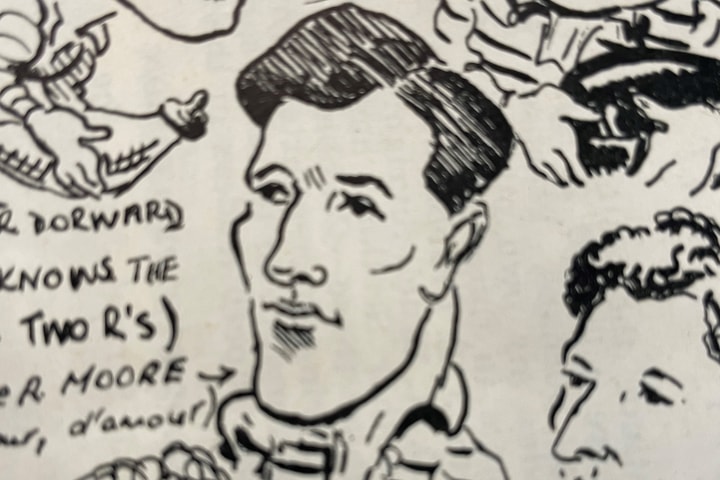He toured South Africa with the British Isles touring party in
the summer of 1924, playing in 14 of the 21 matches on tour and
scored three tries. Although omitted from the team selected for the
1st test, he was picked on the left wing for the remaining three
test matches. He described the tour as "a joyous adventure" in his
book Rugby Reminiscences and Opinions published in 1929,
but he was severely critical of the standard of the overall British
side:
"The real reason for our failure was that we were not good
enough to go abroad as representatives of the playing strength of
these islands. It is not sufficient to send abroad some players of
international standard and others who are only second class. Every
member of the team must be absolutely first class, or disaster is
bound to overtake it."
At the end of the tour Rowe Harding went to study law at
Pembroke College, Cambridge University in October 1924 and he
played for Cambridge against Oxford University at Twickenham two
months later, the first of his four varsity matches. He scored a
try in the 1926 and 1927 matches and captained the University in
his final match in December 1927. Throughout his time at Cambridge,
he played regularly for Wales for whom he scored five tries in his
17 internationals.
A future vice-president of the Welsh Rugby Union, he retired
from rugby after qualifying as a barrister and subsequently became
a county court judge and President of Glamorgan County Cricket
Club.
In October 1925 Carl Douglas Aarvold (1907-1991) arrived at
Emmanuel College, Cambridge University fresh from Durham School to
study law. He made an immediate impression on the rugby field as a
dangerous centre with a lethal break, but he had to wait until
November before playing alongside Rowe Harding who was recovering
from a leg injury sustained on his return from the South African
rugby tour.









